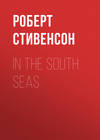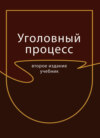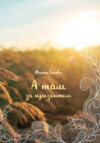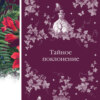Loe raamatut: «In the South Seas»
PART 1: THE MARQUESAS
CHAPTER I – AN ISLAND LANDFALL
For nearly ten years my health had been declining; and for some while before I set forth upon my voyage, I believed I was come to the afterpiece of life, and had only the nurse and undertaker to expect. It was suggested that I should try the South Seas; and I was not unwilling to visit like a ghost, and be carried like a bale, among scenes that had attracted me in youth and health. I chartered accordingly Dr. Merrit’s schooner yacht, the Casco, seventy-four tons register; sailed from San Francisco towards the end of June 1888, visited the eastern islands, and was left early the next year at Honolulu. Hence, lacking courage to return to my old life of the house and sick-room, I set forth to leeward in a trading schooner, the Equator, of a little over seventy tons, spent four months among the atolls (low coral islands) of the Gilbert group, and reached Samoa towards the close of ’89. By that time gratitude and habit were beginning to attach me to the islands; I had gained a competency of strength; I had made friends; I had learned new interests; the time of my voyages had passed like days in fairyland; and I decided to remain. I began to prepare these pages at sea, on a third cruise, in the trading steamer Janet Nicoll. If more days are granted me, they shall be passed where I have found life most pleasant and man most interesting; the axes of my black boys are already clearing the foundations of my future house; and I must learn to address readers from the uttermost parts of the sea.
That I should thus have reversed the verdict of Lord Tennyson’s hero is less eccentric than appears. Few men who come to the islands leave them; they grow grey where they alighted; the palm shades and the trade-wind fans them till they die, perhaps cherishing to the last the fancy of a visit home, which is rarely made, more rarely enjoyed, and yet more rarely repeated. No part of the world exerts the same attractive power upon the visitor, and the task before me is to communicate to fireside travellers some sense of its seduction, and to describe the life, at sea and ashore, of many hundred thousand persons, some of our own blood and language, all our contemporaries, and yet as remote in thought and habit as Rob Roy or Barbarossa, the Apostles or the Cæsars.
The first experience can never be repeated. The first love, the first sunrise, the first South Sea island, are memories apart and touched a virginity of sense. On the 28th of July 1888 the moon was an hour down by four in the morning. In the east a radiating centre of brightness told of the day; and beneath, on the skyline, the morning bank was already building, black as ink. We have all read of the swiftness of the day’s coming and departure in low latitudes; it is a point on which the scientific and sentimental tourist are at one, and has inspired some tasteful poetry. The period certainly varies with the season; but here is one case exactly noted. Although the dawn was thus preparing by four, the sun was not up till six; and it was half-past five before we could distinguish our expected islands from the clouds on the horizon. Eight degrees south, and the day two hours a-coming. The interval was passed on deck in the silence of expectation, the customary thrill of landfall heightened by the strangeness of the shores that we were then approaching. Slowly they took shape in the attenuating darkness. Ua-huna, piling up to a truncated summit, appeared the first upon the starboard bow; almost abeam arose our destination, Nuka-hiva, whelmed in cloud; and betwixt and to the southward, the first rays of the sun displayed the needles of Ua-pu. These pricked about the line of the horizon; like the pinnacles of some ornate and monstrous church, they stood there, in the sparkling brightness of the morning, the fit signboard of a world of wonders.
Not one soul aboard the Casco had set foot upon the islands, or knew, except by accident, one word of any of the island tongues; and it was with something perhaps of the same anxious pleasure as thrilled the bosom of discoverers that we drew near these problematic shores. The land heaved up in peaks and rising vales; it fell in cliffs and buttresses; its colour ran through fifty modulations in a scale of pearl and rose and olive; and it was crowned above by opalescent clouds. The suffusion of vague hues deceived the eye; the shadows of clouds were confounded with the articulations of the mountains; and the isle and its unsubstantial canopy rose and shimmered before us like a single mass. There was no beacon, no smoke of towns to be expected, no plying pilot. Somewhere, in that pale phantasmagoria of cliff and cloud, our haven lay concealed; and somewhere to the east of it – the only sea-mark given – a certain headland, known indifferently as Cape Adam and Eve, or Cape Jack and Jane, and distinguished by two colossal figures, the gross statuary of nature. These we were to find; for these we craned and stared, focused glasses, and wrangled over charts; and the sun was overhead and the land close ahead before we found them. To a ship approaching, like the Casco, from the north, they proved indeed the least conspicuous features of a striking coast; the surf flying high above its base; strange, austere, and feathered mountains rising behind; and Jack and Jane, or Adam and Eve, impending like a pair of warts above the breakers.
Thence we bore away along shore. On our port beam we might hear the explosions of the surf; a few birds flew fishing under the prow; there was no other sound or mark of life, whether of man or beast, in all that quarter of the island. Winged by her own impetus and the dying breeze, the Casco skimmed under cliffs, opened out a cove, showed us a beach and some green trees, and flitted by again, bowing to the swell. The trees, from our distance, might have been hazel; the beach might have been in Europe; the mountain forms behind modelled in little from the Alps, and the forest which clustered on their ramparts a growth no more considerable than our Scottish heath. Again the cliff yawned, but now with a deeper entry; and the Casco, hauling her wind, began to slide into the bay of Anaho. The cocoa-palm, that giraffe of vegetables, so graceful, so ungainly, to the European eye so foreign, was to be seen crowding on the beach, and climbing and fringing the steep sides of mountains. Rude and bare hills embraced the inlet upon either hand; it was enclosed to the landward by a bulk of shattered mountains. In every crevice of that barrier the forest harboured, roosting and nestling there like birds about a ruin; and far above, it greened and roughened the razor edges of the summit.
Under the eastern shore, our schooner, now bereft of any breeze, continued to creep in: the smart creature, when once under way, appearing motive in herself. From close aboard arose the bleating of young lambs; a bird sang in the hillside; the scent of the land and of a hundred fruits or flowers flowed forth to meet us; and, presently, a house or two appeared, standing high upon the ankles of the hills, and one of these surrounded with what seemed a garden. These conspicuous habitations, that patch of culture, had we but known it, were a mark of the passage of whites; and we might have approached a hundred islands and not found their parallel. It was longer ere we spied the native village, standing (in the universal fashion) close upon a curve of beach, close under a grove of palms; the sea in front growling and whitening on a concave arc of reef. For the cocoa-tree and the island man are both lovers and neighbours of the surf. ‘The coral waxes, the palm grows, but man departs,’ says the sad Tahitian proverb; but they are all three, so long as they endure, co-haunters of the beach. The mark of anchorage was a blow-hole in the rocks, near the south-easterly corner of the bay. Punctually to our use, the blow-hole spouted; the schooner turned upon her heel; the anchor plunged. It was a small sound, a great event; my soul went down with these moorings whence no windlass may extract nor any diver fish it up; and I, and some part of my ship’s company, were from that hour the bondslaves of the isles of Vivien.
Before yet the anchor plunged a canoe was already paddling from the hamlet. It contained two men: one white, one brown and tattooed across the face with bands of blue, both in immaculate white European clothes: the resident trader, Mr. Regler, and the native chief, Taipi-Kikino. ‘Captain, is it permitted to come on board?’ were the first words we heard among the islands. Canoe followed canoe till the ship swarmed with stalwart, six-foot men in every stage of undress; some in a shirt, some in a loin-cloth, one in a handkerchief imperfectly adjusted; some, and these the more considerable, tattooed from head to foot in awful patterns; some barbarous and knived; one, who sticks in my memory as something bestial, squatting on his hams in a canoe, sucking an orange and spitting it out again to alternate sides with ape-like vivacity – all talking, and we could not understand one word; all trying to trade with us who had no thought of trading, or offering us island curios at prices palpably absurd. There was no word of welcome; no show of civility; no hand extended save that of the chief and Mr. Regler. As we still continued to refuse the proffered articles, complaint ran high and rude; and one, the jester of the party, railed upon our meanness amid jeering laughter. Amongst other angry pleasantries – ‘Here is a mighty fine ship,’ said he, ‘to have no money on board!’ I own I was inspired with sensible repugnance; even with alarm. The ship was manifestly in their power; we had women on board; I knew nothing of my guests beyond the fact that they were cannibals; the Directory (my only guide) was full of timid cautions; and as for the trader, whose presence might else have reassured me, were not whites in the Pacific the usual instigators and accomplices of native outrage? When he reads this confession, our kind friend, Mr. Regler, can afford to smile.
Later in the day, as I sat writing up my journal, the cabin was filled from end to end with Marquesans: three brown-skinned generations, squatted cross-legged upon the floor, and regarding me in silence with embarrassing eyes. The eyes of all Polynesians are large, luminous, and melting; they are like the eyes of animals and some Italians. A kind of despair came over me, to sit there helpless under all these staring orbs, and be thus blocked in a corner of my cabin by this speechless crowd: and a kind of rage to think they were beyond the reach of articulate communication, like furred animals, or folk born deaf, or the dwellers of some alien planet.
To cross the Channel is, for a boy of twelve, to change heavens; to cross the Atlantic, for a man of twenty-four, is hardly to modify his diet. But I was now escaped out of the shadow of the Roman empire, under whose toppling monuments we were all cradled, whose laws and letters are on every hand of us, constraining and preventing. I was now to see what men might be whose fathers had never studied Virgil, had never been conquered by Cæsar, and never been ruled by the wisdom of Gaius or Papinian. By the same step I had journeyed forth out of that comfortable zone of kindred languages, where the curse of Babel is so easy to be remedied; and my new fellow-creatures sat before me dumb like images. Methought, in my travels, all human relation was to be excluded; and when I returned home (for in those days I still projected my return) I should have but dipped into a picture-book without a text. Nay, and I even questioned if my travels should be much prolonged; perhaps they were destined to a speedy end; perhaps my subsequent friend, Kauanui, whom I remarked there, sitting silent with the rest, for a man of some authority, might leap from his hams with an ear-splitting signal, the ship be carried at a rush, and the ship’s company butchered for the table.
There could be nothing more natural than these apprehensions, nor anything more groundless. In my experience of the islands, I had never again so menacing a reception; were I to meet with such to-day, I should be more alarmed and tenfold more surprised. The majority of Polynesians are easy folk to get in touch with, frank, fond of notice, greedy of the least affection, like amiable, fawning dogs; and even with the Marquesans, so recently and so imperfectly redeemed from a blood-boltered barbarism, all were to become our intimates, and one, at least, was to mourn sincerely our departure.
CHAPTER II – MAKING FRIENDS
The impediment of tongues was one that I particularly over-estimated. The languages of Polynesia are easy to smatter, though hard to speak with elegance. And they are extremely similar, so that a person who has a tincture of one or two may risk, not without hope, an attempt upon the others.
And again, not only is Polynesian easy to smatter, but interpreters abound. Missionaries, traders, and broken white folk living on the bounty of the natives, are to be found in almost every isle and hamlet; and even where these are unserviceable, the natives themselves have often scraped up a little English, and in the French zone (though far less commonly) a little French-English, or an efficient pidgin, what is called to the westward ‘Beach-la-Mar,’ comes easy to the Polynesian; it is now taught, besides, in the schools of Hawaii; and from the multiplicity of British ships, and the nearness of the States on the one hand and the colonies on the other, it may be called, and will almost certainly become, the tongue of the Pacific. I will instance a few examples. I met in Majuro a Marshall Island boy who spoke excellent English; this he had learned in the German firm in Jaluit, yet did not speak one word of German. I heard from a gendarme who had taught school in Rapa-iti that while the children had the utmost difficulty or reluctance to learn French, they picked up English on the wayside, and as if by accident. On one of the most out-of-the-way atolls in the Carolines, my friend Mr. Benjamin Hird was amazed to find the lads playing cricket on the beach and talking English; and it was in English that the crew of the Janet Nicoll, a set of black boys from different Melanesian islands, communicated with other natives throughout the cruise, transmitted orders, and sometimes jested together on the fore-hatch. But what struck me perhaps most of all was a word I heard on the verandah of the Tribunal at Noumea. A case had just been heard – a trial for infanticide against an ape-like native woman; and the audience were smoking cigarettes as they awaited the verdict. An anxious, amiable French lady, not far from tears, was eager for acquittal, and declared she would engage the prisoner to be her children’s nurse. The bystanders exclaimed at the proposal; the woman was a savage, said they, and spoke no language. ‘Mais, vous savez,’ objected the fair sentimentalist; ‘ils apprennent si vite l’anglais!’
But to be able to speak to people is not all. And in the first stage of my relations with natives I was helped by two things. To begin with, I was the show-man of the Casco. She, her fine lines, tall spars, and snowy decks, the crimson fittings of the saloon, and the white, the gilt, and the repeating mirrors of the tiny cabin, brought us a hundred visitors. The men fathomed out her dimensions with their arms, as their fathers fathomed out the ships of Cook; the women declared the cabins more lovely than a church; bouncing Junos were never weary of sitting in the chairs and contemplating in the glass their own bland images; and I have seen one lady strip up her dress, and, with cries of wonder and delight, rub herself bare-breeched upon the velvet cushions. Biscuit, jam, and syrup was the entertainment; and, as in European parlours, the photograph album went the round. This sober gallery, their everyday costumes and physiognomies, had become transformed, in three weeks’ sailing, into things wonderful and rich and foreign; alien faces, barbaric dresses, they were now beheld and fingered, in the swerving cabin, with innocent excitement and surprise. Her Majesty was often recognised, and I have seen French subjects kiss her photograph; Captain Speedy – in an Abyssinian war-dress, supposed to be the uniform of the British army – met with much acceptance; and the effigies of Mr. Andrew Lang were admired in the Marquesas. There is the place for him to go when he shall be weary of Middlesex and Homer.
It was perhaps yet more important that I had enjoyed in my youth some knowledge of our Scots folk of the Highlands and the Islands. Not much beyond a century has passed since these were in the same convulsive and transitionary state as the Marquesans of to-day. In both cases an alien authority enforced, the clans disarmed, the chiefs deposed, new customs introduced, and chiefly that fashion of regarding money as the means and object of existence. The commercial age, in each, succeeding at a bound to an age of war abroad and patriarchal communism at home. In one the cherished practice of tattooing, in the other a cherished costume, proscribed. In each a main luxury cut off: beef, driven under cloud of night from Lowland pastures, denied to the meat-loving Highlander; long-pig, pirated from the next village, to the man-eating Kanaka. The grumbling, the secret ferment, the fears and resentments, the alarms and sudden councils of Marquesan chiefs, reminded me continually of the days of Lovat and Struan. Hospitality, tact, natural fine manners, and a touchy punctilio, are common to both races: common to both tongues the trick of dropping medial consonants. Here is a table of two widespread Polynesian words: —

1Where that word is used as a salutation I give that form.
The elision of medial consonants, so marked in these Marquesan instances, is no less common both in Gaelic and the Lowland Scots. Stranger still, that prevalent Polynesian sound, the so-called catch, written with an apostrophe, and often or always the gravestone of a perished consonant, is to be heard in Scotland to this day. When a Scot pronounces water, better, or bottle —wa’er, be’er, or bo’le– the sound is precisely that of the catch; and I think we may go beyond, and say, that if such a population could be isolated, and this mispronunciation should become the rule, it might prove the first stage of transition from t to k, which is the disease of Polynesian languages. The tendency of the Marquesans, however, is to urge against consonants, or at least on the very common letter l, a war of mere extermination. A hiatus is agreeable to any Polynesian ear; the ear even of the stranger soon grows used to these barbaric voids; but only in the Marquesan will you find such names as Haaii and Paaaeua, when each individual vowel must be separately uttered.
These points of similarity between a South Sea people and some of my own folk at home ran much in my head in the islands; and not only inclined me to view my fresh acquaintances with favour, but continually modified my judgment. A polite Englishman comes to-day to the Marquesans and is amazed to find the men tattooed; polite Italians came not long ago to England and found our fathers stained with woad; and when I paid the return visit as a little boy, I was highly diverted with the backwardness of Italy: so insecure, so much a matter of the day and hour, is the pre-eminence of race. It was so that I hit upon a means of communication which I recommend to travellers. When I desired any detail of savage custom, or of superstitious belief, I cast back in the story of my fathers, and fished for what I wanted with some trait of equal barbarism: Michael Scott, Lord Derwentwater’s head, the second-sight, the Water Kelpie, – each of these I have found to be a killing bait; the black bull’s head of Stirling procured me the legend of Rahero; and what I knew of the Cluny Macphersons, or the Appin Stewarts, enabled me to learn, and helped me to understand, about the Tevas of Tahiti. The native was no longer ashamed, his sense of kinship grew warmer, and his lips were opened. It is this sense of kinship that the traveller must rouse and share; or he had better content himself with travels from the blue bed to the brown. And the presence of one Cockney titterer will cause a whole party to walk in clouds of darkness.
The hamlet of Anaho stands on a margin of flat land between the west of the beach and the spring of the impending mountains. A grove of palms, perpetually ruffling its green fans, carpets it (as for a triumph) with fallen branches, and shades it like an arbour. A road runs from end to end of the covert among beds of flowers, the milliner’s shop of the community; and here and there, in the grateful twilight, in an air filled with a diversity of scents, and still within hearing of the surf upon the reef, the native houses stand in scattered neighbourhood. The same word, as we have seen, represents in many tongues of Polynesia, with scarce a shade of difference, the abode of man. But although the word be the same, the structure itself continually varies; and the Marquesan, among the most backward and barbarous of islanders, is yet the most commodiously lodged. The grass huts of Hawaii, the birdcage houses of Tahiti, or the open shed, with the crazy Venetian blinds, of the polite Samoan – none of these can be compared with the Marquesan paepae-hae, or dwelling platform. The paepae is an oblong terrace built without cement or black volcanic stone, from twenty to fifty feet in length, raised from four to eight feet from the earth, and accessible by a broad stair. Along the back of this, and coming to about half its width, runs the open front of the house, like a covered gallery: the interior sometimes neat and almost elegant in its bareness, the sleeping space divided off by an endlong coaming, some bright raiment perhaps hanging from a nail, and a lamp and one of White’s sewing-machines the only marks of civilization. On the outside, at one end of the terrace, burns the cooking-fire under a shed; at the other there is perhaps a pen for pigs; the remainder is the evening lounge and al fresco banquet-hall of the inhabitants. To some houses water is brought down the mountains in bamboo pipes, perforated for the sake of sweetness. With the Highland comparison in my mind, I was struck to remember the sluttish mounds of turf and stone in which I have sat and been entertained in the Hebrides and the North Islands. Two things, I suppose, explain the contrast. In Scotland wood is rare, and with materials so rude as turf and stone the very hope of neatness is excluded. And in Scotland it is cold. Shelter and a hearth are needs so pressing that a man looks not beyond; he is out all day after a bare bellyful, and at night when he saith, ‘Aha, it is warm!’ he has not appetite for more. Or if for something else, then something higher; a fine school of poetry and song arose in these rough shelters, and an air like ‘Lochaber no more’ is an evidence of refinement more convincing, as well as more imperishable, than a palace.
To one such dwelling platform a considerable troop of relatives and dependants resort. In the hour of the dusk, when the fire blazes, and the scent of the cooked breadfruit fills the air, and perhaps the lamp glints already between the pillars and the house, you shall behold them silently assemble to this meal, men, women, and children; and the dogs and pigs frisk together up the terrace stairway, switching rival tails. The strangers from the ship were soon equally welcome: welcome to dip their fingers in the wooden dish, to drink cocoanuts, to share the circulating pipe, and to hear and hold high debate about the misdeeds of the French, the Panama Canal, or the geographical position of San Francisco and New Yo’ko. In a Highland hamlet, quite out of reach of any tourist, I have met the same plain and dignified hospitality.
I have mentioned two facts – the distasteful behaviour of our earliest visitors, and the case of the lady who rubbed herself upon the cushions – which would give a very false opinion of Marquesan manners. The great majority of Polynesians are excellently mannered; but the Marquesan stands apart, annoying and attractive, wild, shy, and refined. If you make him a present he affects to forget it, and it must be offered him again at his going: a pretty formality I have found nowhere else. A hint will get rid of any one or any number; they are so fiercely proud and modest; while many of the more lovable but blunter islanders crowd upon a stranger, and can be no more driven off than flies. A slight or an insult the Marquesan seems never to forget. I was one day talking by the wayside with my friend Hoka, when I perceived his eyes suddenly to flash and his stature to swell. A white horseman was coming down the mountain, and as he passed, and while he paused to exchange salutations with myself, Hoka was still staring and ruffling like a gamecock. It was a Corsican who had years before called him cochon sauvage – coçon chauvage, as Hoka mispronounced it. With people so nice and so touchy, it was scarce to be supposed that our company of greenhorns should not blunder into offences. Hoka, on one of his visits, fell suddenly in a brooding silence, and presently after left the ship with cold formality. When he took me back into favour, he adroitly and pointedly explained the nature of my offence: I had asked him to sell cocoa-nuts; and in Hoka’s view articles of food were things that a gentleman should give, not sell; or at least that he should not sell to any friend. On another occasion I gave my boat’s crew a luncheon of chocolate and biscuits. I had sinned, I could never learn how, against some point of observance; and though I was drily thanked, my offerings were left upon the beach. But our worst mistake was a slight we put on Toma, Hoka’s adoptive father, and in his own eyes the rightful chief of Anaho. In the first place, we did not call upon him, as perhaps we should, in his fine new European house, the only one in the hamlet. In the second, when we came ashore upon a visit to his rival, Taipi-Kikino, it was Toma whom we saw standing at the head of the beach, a magnificent figure of a man, magnificently tattooed; and it was of Toma that we asked our question: ‘Where is the chief?’ ‘What chief?’ cried Toma, and turned his back on the blasphemers. Nor did he forgive us. Hoka came and went with us daily; but, alone I believe of all the countryside, neither Toma nor his wife set foot on board the Casco. The temptation resisted it is hard for a European to compute. The flying city of Laputa moored for a fortnight in St. James’s Park affords but a pale figure of the Casco anchored before Anaho; for the Londoner has still his change of pleasures, but the Marquesan passes to his grave through an unbroken uniformity of days.
On the afternoon before it was intended we should sail, a valedictory party came on board: nine of our particular friends equipped with gifts and dressed as for a festival. Hoka, the chief dancer and singer, the greatest dandy of Anaho, and one of the handsomest young fellows in the world-sullen, showy, dramatic, light as a feather and strong as an ox – it would have been hard, on that occasion, to recognise, as he sat there stooped and silent, his face heavy and grey. It was strange to see the lad so much affected; stranger still to recognise in his last gift one of the curios we had refused on the first day, and to know our friend, so gaily dressed, so plainly moved at our departure, for one of the half-naked crew that had besieged and insulted us on our arrival: strangest of all, perhaps, to find, in that carved handle of a fan, the last of those curiosities of the first day which had now all been given to us by their possessors – their chief merchandise, for which they had sought to ransom us as long as we were strangers, which they pressed on us for nothing as soon as we were friends. The last visit was not long protracted. One after another they shook hands and got down into their canoe; when Hoka turned his back immediately upon the ship, so that we saw his face no more. Taipi, on the other hand, remained standing and facing us with gracious valedictory gestures; and when Captain Otis dipped the ensign, the whole party saluted with their hats. This was the farewell; the episode of our visit to Anaho was held concluded; and though the Casco remained nearly forty hours at her moorings, not one returned on board, and I am inclined to think they avoided appearing on the beach. This reserve and dignity is the finest trait of the Marquesan.




















